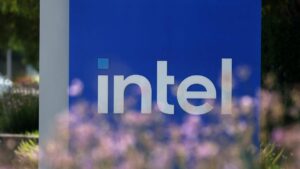Young people with severe depression experience disruptions in the way parts of their brain communicate with each other that are different from those observed in adultsa study found.
The research conducted on Tuesday Nature Mental Health can be used to identify potential targets for brain stimulation therapies, extending their existing application from adults to youth.
The study analyzed the brain scans of 810 young people aged 12-25, of which 440 had major depressive disorder (MDD) and 370 healthy comparison individuals.
The study led by the University of Melbourne found that in those with MDD, some densely connected regions of the brain (known as hubs) showed stronger connectivity and others showed weaker connectivity compared to youth without depression.
Prof Andrew Zalesky, the supervising researcher, said they found that the connectivity was particularly strong in the part of the brain associated with someone’s internalized thoughts and rumination. “We see that in youth with depression, the default mode is more strongly connected, it’s more activated, suggesting that there’s a greater focus on self-thinking and self-reflection,” Zalesky said.
The study, whose first author was University of Melbourne third-year PhD student Nga (Connie) Yan Tse, also found the magnitude of these differences could reliably predict how severe a person’s depressive symptoms were.
The researchers achieved what Zalesky called “the largest sample size of youth with depression and healthy comparison” using data from previous independent studies from six sites in Australia, China, the UK and the US.
Brain stimulation therapies can be targeted to restore specific brain circuits as an alternative approach to treating depression, when someone does not respond to first-line treatmentssuch as antidepressants, Zalesky said.
However, they are more commonly given as treatment to adults because researchers know which circuits are disrupted.
Targets developed to treat adult depression with transcranial magnetic stimulation (TMS) were used to treat youth as a “best-guess approach,” the paper found.
TMS is only recommended for adults by Australia’s medicine regulator, the Therapeutic Goods Administration, but it can be made available to youth at the clinic’s discretion, Zalesky said.
“The assumption is that the same circuits will be affected in youth with depression, and our work shows that this is not necessarily the case.
“While there is some overlap with the connectivity disturbances we see in adults, there are also unique and specific circuit disruptions that we only see in youth with depression.”
to newsletter promotion
For example, the network responsible for identifying the most relevant piece of information at any given time, the researchers found, was extensively implicated in juvenile MDD, while findings were mixed in adult depression, Zalesky said.
Further studies will need to be done to test the efficacy and safety of brain stimulation therapies in youth so that they can be practiced more widely among clinicians, “but this is a necessary first step toward providing targets,” Zalesky said. .
Dr Hollie Byrne, a postdoctoral research fellow at the Matilda Center for Research in the Humanities Health and Substance Use at the University of Sydney, which was not involved in the research, said that while this “provides essential evidence for identifying potential therapeutic targets” for brain stimulation therapies, “it is important to remember there is no ‘one-size-fits-all’ -fits’ -all’ approach to the treatment of depression”.
“Currently, neuromodulatory therapeutics are recommended to be used in conjunction with other treatment options as part of a comprehensive, personalized treatment plan, or in cases where other treatment options have been exhausted,” Byrne said.
Dr Stevan Nikolin, a neuroscience fellow at the Black Dog Institute, said “the work described in this study extends findings in adult individuals with MDD to adolescent/young adult depression”.
“This advances our understanding of the disorder in young people, and with that understanding, future interventions can be devised to specifically address the pathological brain activity identified,” Nikolin said.
The authors also acknowledge limitations of the study, including only looking at each youth with depression at one point in time.
Zalesky acknowledged that, without undertaking further clinical testing, any conclusions about brain stimulation should still be taken with caution.





